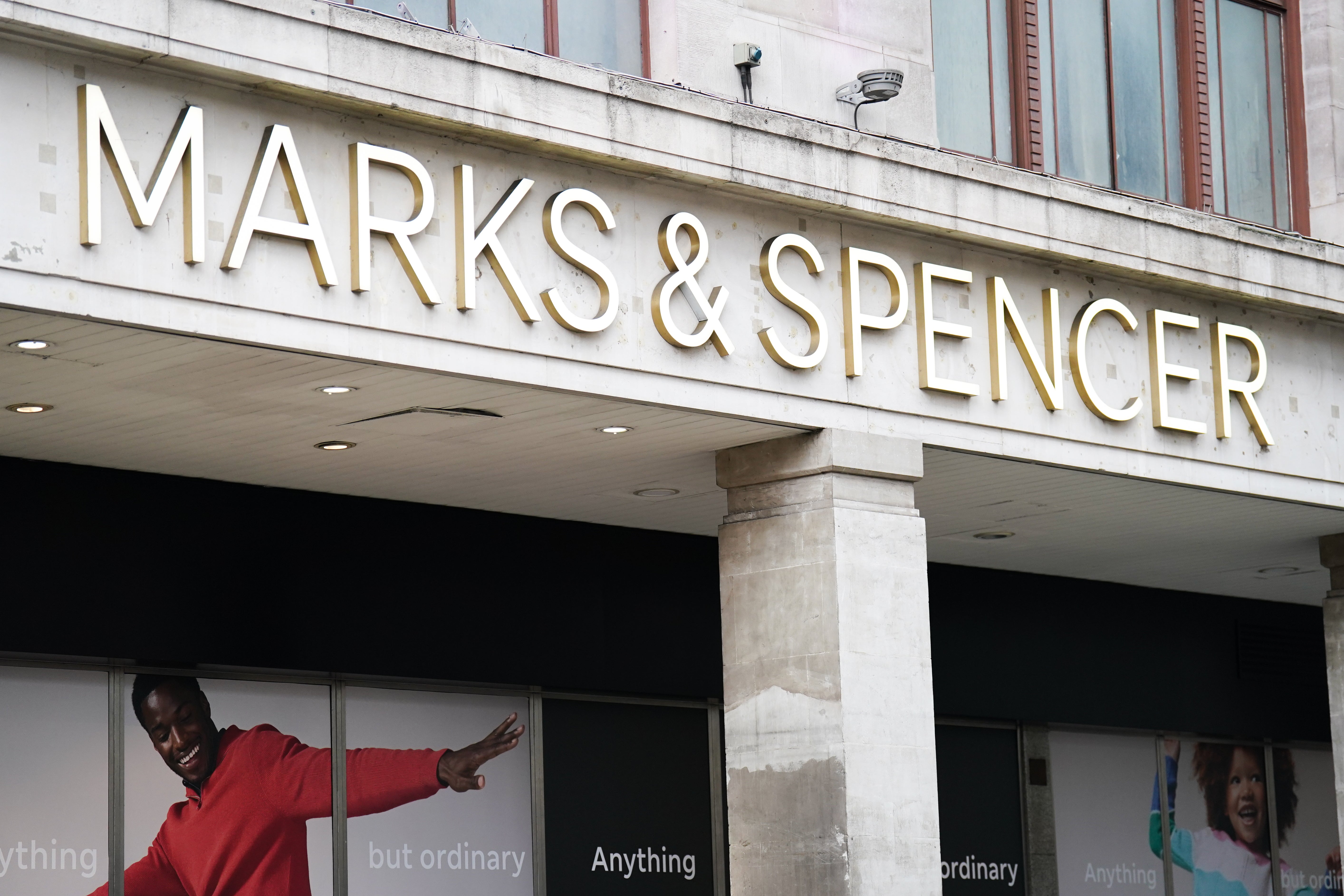

SCIENCE
Facebook Bows to Trump’s DOJ: New Move Against Anti-ICE Group Sparks Controversy
Published
2 weeks agoon
By
OBS
The Department of Justice pressed Facebook to remove a group where users alerted members to the presence of Immigration and Customs Enforcement agents in Chicago, according to Attorney General Pam Bondi.
The move follows a pressure campaign from Donald Trump’s administration against tech companies over anti-ICE content as federal law enforcement surges into Democratic-led cities to support the president’s mass deportation agenda.
Facebook’s apparent submission to Trump comes after Meta CEO Mark Zuckerberg pledged that the platform would not “compromise” its content standards under “pressure from any administration in either direction.”
Last year, Zuckerberg expressed regret that Joe Biden’s administration pushed the platform to better moderate COVID-19 content and potentially politically damaging stories ahead of the 2020 presidential election, which the FBI warned may have been tied to a Russian disinformation operation.
“I believe the government pressure was wrong, and I regret that we were not more outspoken about it,” Zuckerberg wrote to members of Congress last year. “I feel strongly that we should not compromise our content standards due to pressure from any Administration in either direction — and we’re ready to push back if something like this happens again.”

Republicans ultimately sued the Biden administration over its attempts to reduce COVID misinformation during the pandemic through requests to social media companies to take down false statements about vaccines or the virus. Last year, the Supreme Court determined that those requests did not amount to unlawful coercion.
The Biden administration’s actions at the center of that case triggered a wave of right-wing outrage, alleging a Democratic-led assault of First Amendment rights and illegal interference against privately owned platforms.
“Discussion of where ICE has been spotted operating, and even the identities of agents, is protected by the First Amendment,” according to Ari Cohn, lead counsel for tech policy at the Foundation for Individual Rights and Expression.
“If there’s a true threat, you prosecute that,” Cohn said. “But you cannot silence lawful speech, or pressure platforms to, because you’re worried it might be ‘misused.’ … Just like with the Biden administration, platforms must tell the government to buzz off when they try to interfere.”

Members in a Facebook group called “ICE Sighting-Chicagoland” alerted others to federal agents in their neighborhood — what administration officials have falsely conflated with “doxxing,” or revealing identifying information about officers to “target” them.
“The wave of violence against ICE has been driven by online apps and social media campaigns designed to put ICE officers at risk just for doing their jobs,” Bondi wrote Tuesday. “The Department of Justice will continue engaging tech companies to eliminate platforms where radicals can incite imminent violence against federal law enforcement.”
A spokesperson for Meta told The Independent that the group — which crowd sourced the locations of ICE agents — violated the platform’s policies against “coordinated harm.”
The platform prohibits users “outing the undercover status of law enforcement, military, or security personnel if the content contains the agent’s name, their face or badge,” or the agent’s law enforcement organization or operation, or “explicit mentions of their undercover status.”
It is unclear what specific rule the group violated, or if any group that allows users to report the locations of ICE against in their neighborhoods can be allowed under Meta’s rules. Meta did not respond to additional questions from The Independent.

This month, Apple and Google blocked users from downloading apps that similarly crowd-sourced ICE sightings, hours after the Trump administration demanded a popular iPhone be removed from the App Store.
ICEBlock, described as “Waze for ICE sightings,” was downloaded more than 1 million times after its launch this year. The app effectively serves as an early-warning system for users, who can drop pins on a map to note the presence of ICE in any given area. Identifying information was not included.
Bondi claimed that the app is “designed to put ICE agents at risk just for doing their jobs.”
In a Senate oversight hearing this month, she said she spoke with Apple to “get the ICEBlock app taken down” because users were “posting where ICE officers lived.”
Apple complied, sending a message to the app’s creator Joshua Aaron that the app was pulled over “objectionable content” following information “provided to Apple by law enforcement.”
“The only thing we can imagine is this is due to pressure from the Trump [administration],” according to the app.
Right-wing influencer Laura Loomer appeared to take credit for Facebook’s latest action, claiming that her “source” within the Justice Department contacted the company about removing the group. She demanded Zuckerberg – who has grown close with Trump in his second administration — face “accountability” for his “crimes.”
“He’s just trying to cover his own ass while he continues to work against the Trump admin every single day,” Loomer wrote on X Monday. “It’s further evidence Big Tech is continuing to subvert and undermine President Trump and his agenda.”
The following day, Bondi announced Facebook removed the group Loomer had reported following “DOJ outreach.”
You may like
-


Could Trump’s Meds Be Slowing Him Down? Expert Warns They Might Not Be Helping!
-


Young Republicans Caught in Racist Group Chat Resign Following Shocking Revelations
-


Shocking Move: Bayelsa Governor Douye Diri Switches from PDP to APC!
-


Unbelievable! Harry Kane’s Stunning Brace Sparks England’s World Cup Victory Over Latvia!
-


Trump’s Middle East Peace Dream Crumbles Just 24 Hours In!
-


Eric Trump’s Shocking Claim About His Dad ‘Saving God’ Sparks Outrage!
SCIENCE
Thousands of Civil Servant Passwords Exposed: Experts Warn of Major Security Threat!
Published
2 weeks agoon
October 16, 2025By
OBS
More than 3,000 passwords belonging to civil servants have been exposed online since the beginning of 2024, according to new research, as experts warn it could pose a “serious risk” to national security.
A report by NordPass, using the threat exposure management platform NordStellar, found 3,014 passwords belonging to British civil servants have been leaked in the deep web – which encompasses parts of the internet that are not typically indexed by search engines– and the dark web, a small, encrypted part of the deep web that requires specific software to access and is often associated with cybercrime.
Four local authorities were named in the report as having passwords exposed online: Aberdeen City Council had 538 in total, while Lancashire County Council had 38, Newham Council had 73 and Southwark Council had 42 leaked on the dark and deep web.
It comes after The Independent revealed that hundreds of passwords and email addresses linked to UK government institutions were posted on the dark web in the last year, highlighting a major threat to UK cyber and national security. Among the most affected government departments are the Ministry of Justice with 195 exposed passwords, the Ministry of Defence (111), and Department of Work and Pensions (122).
A cyber security expert warned that the exposed sensitive data of civil servants was particularly dangerous as it could pose serious risks to the UK’s strategic interests.
Karolis Arbačiauskas, head of product at NordPass, said: “Exposure of sensitive data, including passwords, of civil servants is particularly dangerous. Compromised passwords can affect not only organisations and their employees but also large numbers of citizens. Moreover, such incidents may also pose serious risks to a country’s strategic interests.”

The report added that while the “vast majority of passwords exposed were those of employees working in regional level institutions,” the number of leaked passwords did not necessarily reflect the strength of an organisation’s internal security.
“These figures are often influenced by external factors,” said Mr Arbačiauskas. “Larger organisations, with more employees, naturally have a bigger digital footprint, which statistically increases the likelihood of credentials being exposed in a breach. In many cases, a single malware infection on an employee’s personal device or the compromise of a popular third-party website can expose dozens of accounts. Furthermore, the majority of leaks originate from external sites where employees registered using their work email addresses.”
He encouraged the practice of setting up an organisation-wide password policy, never reusing passwords, and using multi-factor authentication.
“If these passwords were not changed after their appearance on the dark web and multi-factor authentication (MFA) is not enabled, attackers could potentially access the email accounts and other sensitive information of these civil servants,” he said. “Moreover, we found hundreds of thousands of email addresses with other exposed data like names, last names, phone numbers, autofills, and cookies. This data can be exploited for phishing attacks and pose significant risks.”
It comes as the National Cyber Security Centre (NCSC) said on Tuesday that a “significant threat” posed by Chinese and Russian hackers had contributed to a record number of serious online attacks. A number of UK businesses, such as M&S, Jaguar Land Rover and Co-op have been hit by cyber attacks this year, crippling their operations and costing the firms billions.
In the year to the end of August, NCSC provided support in 429 cases, of which 204 were deemed “nationally significant incidents” – an increase from 89 in the previous 12 months. Of those, 18 were categorised as “highly significant”, meaning they had a serious impact on government, essential services, the economy or a large proportion of the UK population.
A spokesperson for Newham Council said: “It is an unfortunate reality that organisations like Newham Council will always be a target for criminals. Newham Council takes cybersecurity extremely seriously and have a number of robust measures in place to reduce risk. We regularly provide training and guidance to our staff making them aware of the risks and effective technical controls to reduce specific cyber risks. We do not comment on specific details of our cyber security controls and policies.”
An Aberdeen City Council spokesperson said: “Aberdeen City Council regularly reviews lists of compromised credentials via the National Cyber Security Centre and other official sources. These email/ password combinations are typically used to sign up on external sites or services rather than being compromised from the council’s tenant. Regardless of this all impacted account holders are contacted, and their passwords are reset as a matter of course.”
The Independent has approached Lancashire County Council, and Southwark Council for comment.
SCIENCE
AI Robotics Company Secures Funding Boost Thanks to Scottish National Investment Bank!
Published
2 weeks agoon
October 15, 2025By
OBS
An AI robotics company has raised more than £8 million, including funding from the Scottish National Investment Bank, to develop innovative technology.
Launchpad announced it has successfully concluded a Series A funding round, raising a total of 11 million US dollars, the equivalent of £8.2 million.
Launchpad is combining AI and advanced robotics to support critical automation strategies.
Its aim is for its technology to help companies build products faster, smarter, and more affordably.
The round was co-led by Lavrock Ventures and Squadra Ventures with participation from financial investors including the Scottish National Investment Bank, Ericsson Ventures, Lockheed Martin Ventures and Cox Exponential.
This is in addition to the 2.5 million dollars in grant funding previously awarded to Launchpad by Scottish Enterprise.
Last year, it opened a new research and development (R&D) centre in Edinburgh, choosing the city for its access to a skilled workforce and connections to university AI research and expertise.
Adrian Gillespie, chief executive of Scottish Enterprise, said: “With its R&D centre in Edinburgh, Launchpad is able to draw on Scotland’s long-standing academic, technical and entrepreneurial strengths.
“The company has quickly become an influential part of the Scottish innovation community, and we look forward to supporting its next growth phase.”
Anthony Kelly, investment director at the Scottish National Investment Bank, said: “Launchpad is fast becoming a leader in robotics, with its new R&D centre reinforcing Scotland’s reputation for innovation.
“We’re backing a high-calibre team whose cost-efficient solution shows strong potential to scale across multiple industries.”
SCIENCE
Discover How the New Apple Watch Measures Your Heart Rate with Amazing Accuracy!
Published
2 weeks agoon
October 15, 2025By
OBS
When the latest Apple Watch models were unveiled last month, the announcement of longer battery life, a bigger display and satellite connectivity for Apple Watch Ultra 3 were eye-catching. But it was a new health feature that was the real draw: notifications for hypertension, that is, high blood pressure.
Apple has placed health and the heart at the forefront for its Watch for years, with ECG readings and blood oxygen measurements among recent highlights.
Sumbul Desai, Apple’s vice president of health, spoke to The Independent soon after the announcement to explain the new feature and the thinking behind it.
“We’ve been wanting to work on hypertension for many years, to be candid. Hypertension affects more than a billion people worldwide, but less than half those cases are diagnosed. We wanted to raise awareness and to give people more power to avoid some complications that can happen down the line,” says Dr Desai.
But how to measure it? Conventional methods, where a clinician straps a cuff to your arm may not be the best.
“Often, when I used to see people in the clinic, they would come in,” Dr Desai explains, “and they’d be really nervous, so their blood pressure would be elevated, or they just ran from parking their car and, again, it’s elevated. But does that truly reflect what their blood pressure is as they live their everyday life?”
The new feature is not like heart rate, where you can initiate a reading instantly. Here, the feature works in the background by measuring blood pressure over a 30-day period. “We wanted to get a sense of your blood pressure as you’re just living your life,” Desai says.
At the end of that period, if it’s spotted what it thinks are high blood pressure readings, the Watch will notify you and encourage you to log your blood pressure.
Other wearables can measure your blood pressure, such as the Hilo band and Samsung smartwatches. They usually require calibration with a traditional cuff, but that’s not necessary here — again, Apple wants a simple process.
“We think about health as being holistic at Apple, and one of the keys to managing hypertension is exercise. I always say, if I could prescribe anything, it would be movement, because that’s key to so many conditions,” she adds.
While the heart rate monitoring on Apple Watch shows you beats per minute, there are no figures revealed for hypertension. Why is that?
“It was a few things, such as keeping it more simple and friendly. The way our algorithm works is that we did compare it to ground truth with a cuff, but we did it over a period of 30 days. Your blood pressure, one minute, can be higher, then you sit down, and it’s lower,” Desai explains. “So, we decided to not fixate on a number: because of so many variations we were having a lot of outliers. And so it was better to do an aggregate over 30-day periods. The way the algorithm works is it looks at a signal that is indicative of hypertension, but isn’t necessarily measuring the actual number but it correlates with the blood pressure number. We are not measuring systolic and diastolic directly in the traditional sense.
“What we’re measuring is how the blood is flowing and what the response of the blood flow is, to the beats of the heart, and that correlates with blood pressure, which is why we didn’t put an exact number in, for one reason. We wanted to start with how do we get the true sense of what your blood pressure is as you’re living your life without a fixation on the number? And so that was the reason we decided to approach it more from this vantage point given the technology we have.”
Though no number is shown, the algorithm knows what the range is. It compares your individual readings over 30 days and then resets. “We had people take their blood pressure at various points during the day, and that’s how we correlated the signal. We’re looking at the trace pattern of the signal, that correlated with elevated blood pressure,” Dr Desai says.
She also explains that the sensitivity of the analysis is on the low side – Desai says it will detect four out of ten cases – compared to specificity which is very high, about 92 per cent.
“The reason we did that is, for those that get a notification, we wanted to feel confident that they will have a positive result. We didn’t want to create a situation where, if the number was lower, say, we had false positives, and we wanted to make sure there was confidence in the algorithm when someone is using it. So, we made the trade-off of not being able to capture everyone, because if you look at the numbers of hypertension, it’s still significantly a large number. But those that actually get a notification, we feel very confidently it will yield a stage one or stage two diagnosis. If you get notified, you’re more than likely to have a condition.”
The 30-day system means it’ll assess your data for 30 days and if it sees nothing it will reset and start checking again over the next 30 days. “If you do receive a notification, it’s not that the process stops, we still keep checking in the background. I think it has a potential of shortening kind of the time frame that people get diagnosed with hypertension,” Dr Desai hopes.
The assessments take place multiple times a day, though not when you’re on a vigorous run, for instance, because your heart rate would naturally be elevated. There’s no set number of readings, but there’s a minimum across the 30 days for Apple to be confident in the data. Each reading takes just seconds.
The feature has a future, Desai thinks: “We do the appropriate validation testing to get the regulatory approval, because the regulators have to feel like we’re not providing anybody with inaccurate information. But I think this area is ripe to understand more. This is very novel system in the way it does it, and we think we will learn that there may be other signals that this may be also indicative of, but we started with hypertension. And I think that’s what’s so remarkable.”
Categories
Top Tags
Related posts






















